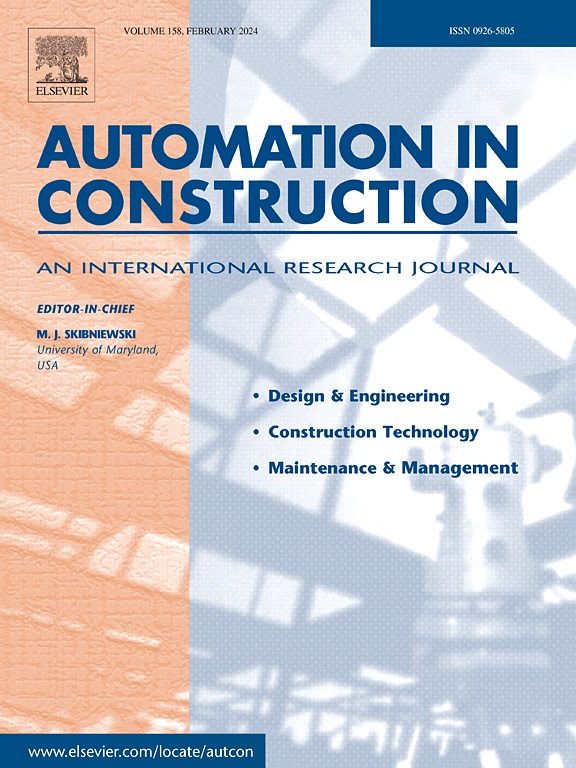基于分段任意模型(SAM)的结构构件尺寸自动检测与量化
IF 11.5
1区 工程技术
Q1 CONSTRUCTION & BUILDING TECHNOLOGY
引用次数: 0
摘要
本文提出了一种利用斜向摄影和SAM-dimension (Segment Anything model -dimension)模型自动检测和定量结构构件全截面尺寸的方法。与仅测量单个横截面的传统方法不同,该方法可以在整个组件中进行全横截面尺寸检测,从而提高效率和覆盖范围。该方法利用摄像机在组件区域内的十字准星位置来调整模型的提示模块策略,使操作无需人工干预。将模型输出与原始图像融合生成二值掩模。此外,该方法还结合了局部单元法、连通域分析和掩码特征提取进行维度量化。实验结果表明,该模型对不同距离和光照的适应能力强,能准确分割正方形、圆形和变截面的分量。柱型构件的截面宽度和高度的相对误差在1.22%以内,梁型构件的相对误差在3.02%以内,具有较强的鲁棒性和通用性。本文章由计算机程序翻译,如有差异,请以英文原文为准。
Automated detection and quantification of structural component dimensions using segment anything model (SAM)-based segmentation
This paper presents a method for automatic detection and quantification of full cross-sectional dimensions of structural components using oblique photography and the SAM-dimension (Segment Anything Model-dimension) model. Unlike traditional methods that measure only a single cross-section, this approach enables full cross-sectional dimension detection across the entire component, enhancing efficiency and coverage. The method utilizes the camera's crosshair position within the component area to adjust the model's prompt module strategy, allowing operation without human intervention. A binary mask is generated by fusing the model's output with the original image. Additionally, the method incorporates local unit methods, connected domain analysis, and mask feature extraction for dimension quantification. Experimental results show the model's adaptability to varying distances and lighting, accurately segmenting square, circular, and variable cross-section components. The relative errors for column components' cross-sectional width and height are within 1.22 %, and for beam-type components, within 3.02 %, demonstrating robust and generalized performance.
求助全文
通过发布文献求助,成功后即可免费获取论文全文。
去求助
来源期刊

Automation in Construction
工程技术-工程:土木
CiteScore
19.20
自引率
16.50%
发文量
563
审稿时长
8.5 months
期刊介绍:
Automation in Construction is an international journal that focuses on publishing original research papers related to the use of Information Technologies in various aspects of the construction industry. The journal covers topics such as design, engineering, construction technologies, and the maintenance and management of constructed facilities.
The scope of Automation in Construction is extensive and covers all stages of the construction life cycle. This includes initial planning and design, construction of the facility, operation and maintenance, as well as the eventual dismantling and recycling of buildings and engineering structures.
 求助内容:
求助内容: 应助结果提醒方式:
应助结果提醒方式:


